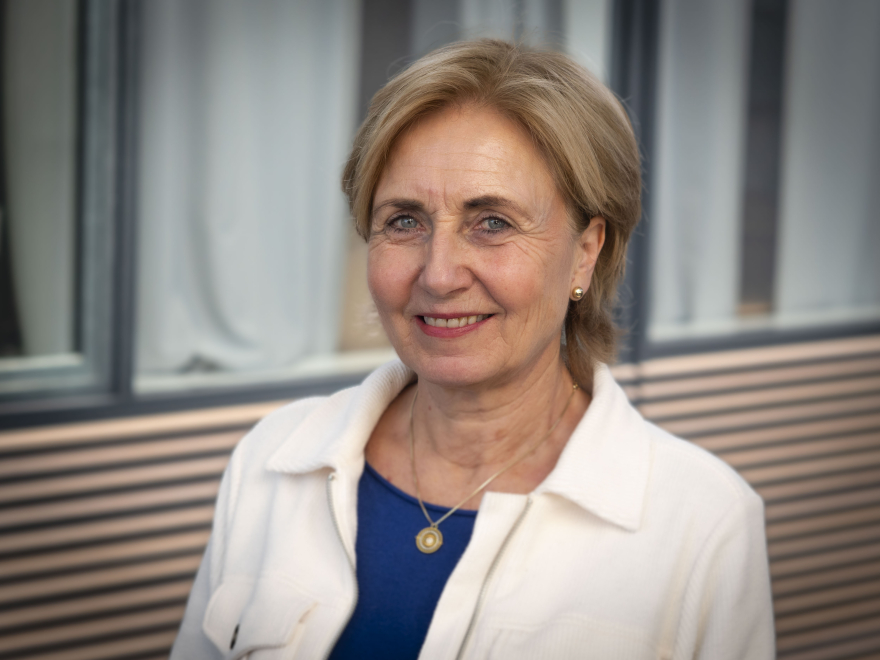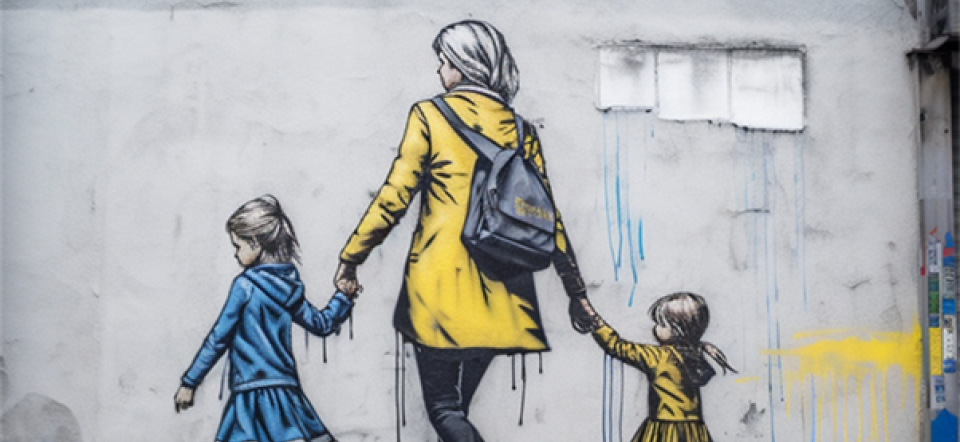Three years ago, Russia started a full-scale invasion of Ukraine. Since February 2022, millions of refugees have escaped Ukraine. Most of them to proximate states but some all the way north to the Baltic and Nordic countries.
The high number of arrivals has led to capacity challenges in the reception apparatus at all levels, from registration to housing and schooling in host countries leading to rapidly changing policies and practices of local structural refugee integration. The project Influx of migrants following Russia's invasion of Ukraine: Integration and Governance Dynamics in Nordic and Baltic States (INFLUX) studied the unprecedented situation of the Ukrainian refugees in Norway, Sweden, Finland, Estonia and Lithuania.
Seven policy briefs on the different angles of the project have been published. NordForsk has summarized the policy briefs and key findings of the INFLUX project in the report Refugee Integration and Governance in the Nordic-Baltic Region.
The project, led by Liv Osland from Western Norway University of Applied Sciences (HVL) and Cathrine Talleraas from Chr. Michelsen Institute (CMI) in Norway, did several work packages studying everything from arrival in host country, integration in host country, but also transnationalism, and potential emigration from host country.
“Our project encompasses crucial parts of the overall refugee cycle, which is linked to processes of integration. Important questions we are asking is what are the outcomes of the new refugee integration policies and practices, how can they be improved? What is there to learn for the future?”, says Liv Osland.
Variation in results between countries
The results of the project can be structured into three main areas: integration into labour markets, refugee and migration governance and the integration of youth and families. One overarching finding of the project was that the studied countries in the Nordics and Baltics vary in their integration processes, policies and outcomes.
“When it comes to integration into labour markets, I expected there would be differences between countries, but it still surprised me how substantial the differences were for instance between Estonia and Norway. A large proportion of the Ukrainian refugees in Estonia, both men and women, gain work quite soon after their arrival. This has not been the case in Norway. We have not studied the reasons for this, but in general it may be assumed that integration policies are one important explanation for the situation in Norway”, Osland says.
Estonia has not had many refugees before, whereas Norway is highly experienced with immigration and integration of refugees and has for many years had a dispersal policy. Refugees in Norway cannot choose where to live and are mainly settled all over the country. However, many of the refugees, in the longer term choose to move to more central residential places. Evidence from Estonia, which does not have such a policy, show that Ukrainian refugees at least in the short term, are geographically more dispersed than other ethnic minority groups.
“Preliminary findings in the project show that Norway’s dispersal policy has conflicting goals. It spreads refugees across the country, but that doesn’t always align with job market realities. The preliminary research suggests that a more flexible approach could improve both labor market integration and regional development.”, says Osland.

In terms of integration processes, the project found that in Estonia, transnational networks and strong ties to Ukraine also fostered local networks and integration processes. Despite efficient digital systems to support integration processes, strong connections with Estonian locals remained limited, hindered by social and language barriers.
In a completely different realm, the project targeted Norwegian border control at its northern border to Russia. Here, findings show that the invasion of Ukraine also led to shifts in border control practices. Border officers drew on the experiences from the so-called “refugee crisis” of 2015 and were thus better prepared to respond to the shifts in 2022, for example in terms of inter-agency collaboration.
Read more about the part of the project focusing on integration of youth and families in The integration of young Ukrainian refugees requires a completely new strategy.
Impact on integration policy
The project has gained great interest from both researchers and local coordinators and leaders working with integration of refugees as well as the general public, according to Liv Osland.
“We hope that the project will contribute to better policy-making and more evidence-based decision-making in the region. By highlighting which measures work and which challenges exist, we want to strengthen both national and regional integration policies. In the long term, this can lead to improved integration processes, better utilization of refugees' resources in the labor market, and a more inclusive societal development in the Nordic and Baltic regions.”, she says.
The INFLUX project is a result of a special commission which NordForsk received from the Nordic Council of Ministers secretariat to fund research supporting activities with relevance mainly for the integration of refugees from Ukraine in the Nordic countries. The purpose of the call was to capitalise on existing, excellent Nordic research networks from NordForsk’s research initiative on Migration and on Integration.
Find out more about the results of the INFLUX project in the report Refugee Integration and Governance in the Nordic-Baltic Region.




